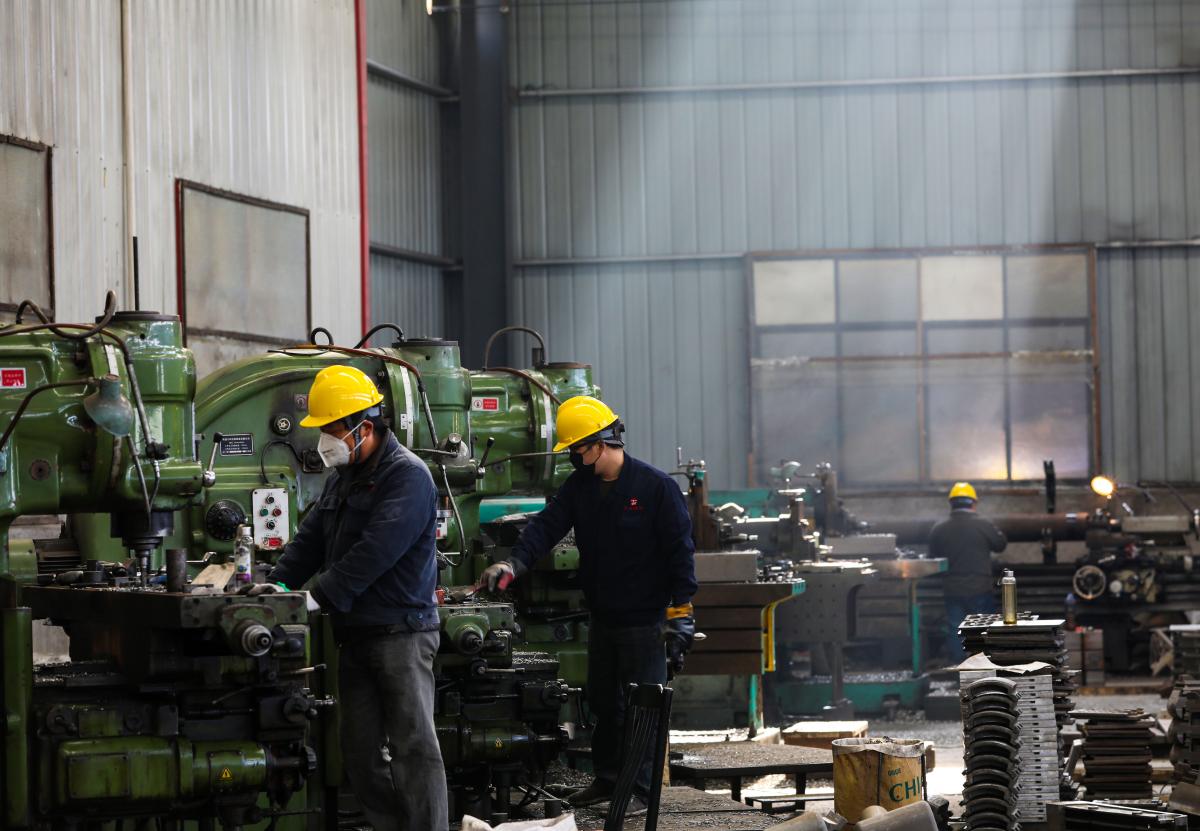Why is the trade union still missing from China’s work safety regime?
01 September 2020Wang Liyi was at home playing mahjong with his relatives when the explosion occurred. The windows of his small village house were blown in and the door was jammed shut. Covering their heads with quilts, Wang’s wife and children managed to crawl through the window to safety before the house collapsed. Mr Wang’s family lived less than one kilometre away from the Tianjiayi Chemical Co. pesticide plant in Xiangshui county, Jiangsu. The explosion there on 21 March 2019 killed 78 people and seriously injured another 76.
Wang Liyi and his family are among the countless victims of industrial accidents in China over the last three decades. In nearly all cases, the stories of individual workers have been obscured in the official narrative, which always follows the same script: rescue efforts under the guidance of government officials, investigation into the cause of the accident, identification and punishment of those culpable, urgent inspection and rectification of at-risk industries. But then the next accident occurs and the whole process starts again.
In a new Chinese-language report published yesterday, China Labour Bulletin asks why the Chinese government has so far failed to eliminate, or at least stall, this cycle of tragedy. We note that in addition to sidelining workers in the enforcement of work safety standards and accident prevention, the government has also ignored the organization that should be representing the workers: the trade union.

The report, entitled 工会归位,履行安全生产监督职责 (Returning the union to its rightful place in supervising work safety), examines three major accidents that illustrate just how ineffective the official trade union has been in ensuring work safety. These accidents - the Sunjiawan Coal Mine explosion in 2005 that killed 214 people, the scaffolding platform collapse at a construction site in Fengcheng in 2016 that killed 73 workers, and the above mentioned Tianjiayi chemical plant explosion that killed 78 people - all have something in common. Apart from occasional safety campaigns, the union had no real supervisory role prior to the accident and simply followed the government’s lead in the subsequent investigation.
The report points out that China’s Trade Union Law, the Work Safety Law, and other regulations not only give trade union officials the right to supervise enterprise work safety, but also that officials are actually legally obligated to do so. Yet, there seems to be no record of any trade union official ever being punished, following a major accident, for failing to perform their duties under the Trade Union Law.
Any effective work safety regime should have four indispensable facets: legislation enacted by the central government, administrative enforcement by the local authorities, enterprise compliance with laws and regulations, and supervision by the workers and the union. In China, however, all the emphasis appears to be placed on administrative enforcement. This would not necessarily be a problem if the enforcement was effective. However, government inspectors have consistently failed to ensure work safety at enterprises. Accidents continue to happen on a regular basis, often at enterprises that have “passed” inspection, or at those who have received fines and rectification notices but never complied with them. As CLB has pointed out in previous reports, the construction industry is a particularly egregious example of the failure of government supervision and the ineffectiveness of the trade union thus far.
By way of contrast, the new report also looks at four examples of how, over the last century, international trade unions played a more effective role in ensuring their members’ safety at work. Following the Triangle Shirtwaist Factory fire in New York in 1911, the Aberfan disaster in 1966, the Westray coal mine explosion in Nova Scotia in 1992, and the 1974 Elliot Lake uranium mine strike in Canada, trade unions were instrumental in pushing for improvements in work safety and ensuring those improvements were effectively implemented.
What lessons can be learned from these incidents? The report concludes that work safety in China will only improve if trade unions start to exercise their rights under the law and take responsibility for workers’ safety.
This process can only begin by grassroots organizing in the workplace, and by the creation of inclusive regional industrial unions. Only when the union can genuinely represent the entire workforce can it negotiate a collective agreement with enterprise management that will, among other things, ensure that all workers are covered by medical and work accident insurance. The collective agreement, moreover, should empower frontline workers to effectively supervise work safety and alert the enterprise to any potential hazards or dangerous work practices. In the unfortunate event of an accident, the collective agreement should specify the rights and obligations of all parties, thereby obviating the need for long, drawn-out disputes over compensation and other routine claims.
In short, the trade union simply needs to stop cowering behind government safety inspectors, show some initiative, and start to take seriously its responsibility to safeguard the rights and interests of workers.
